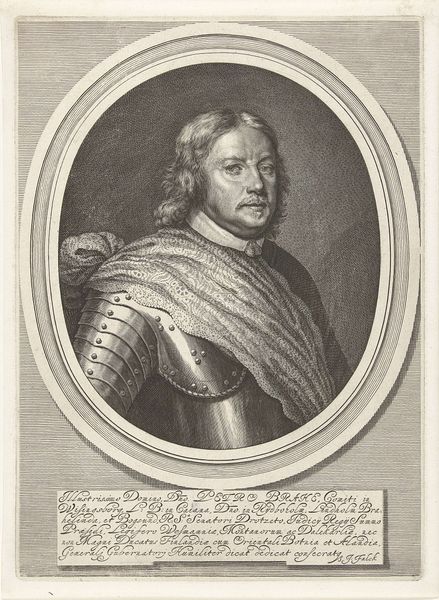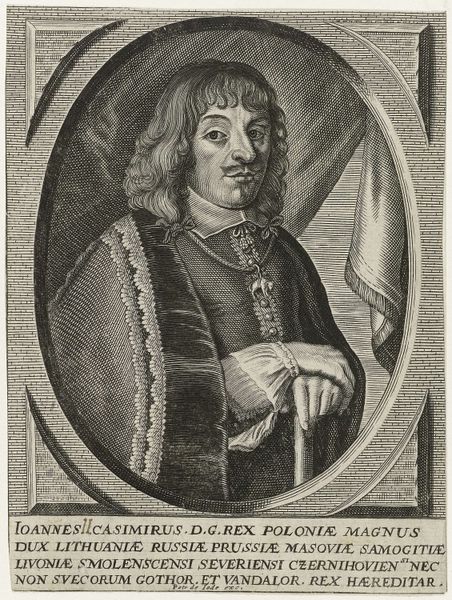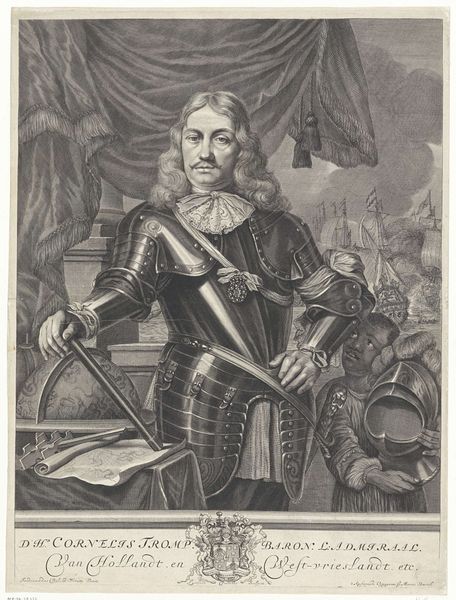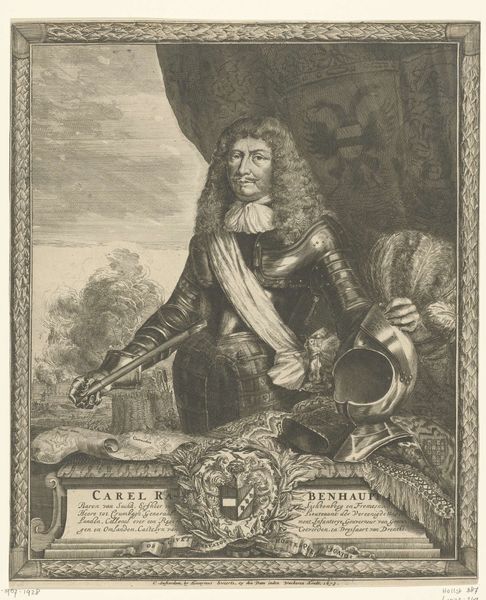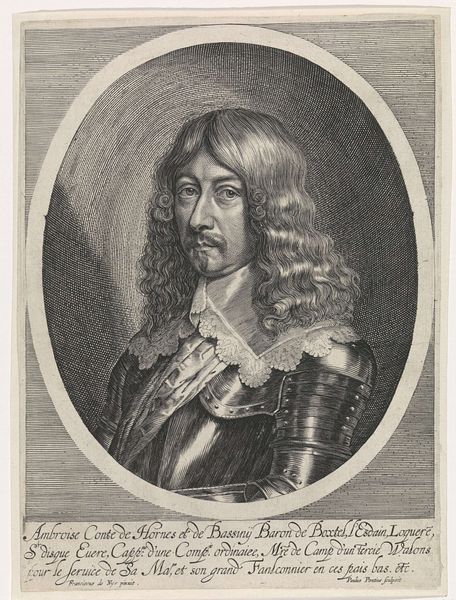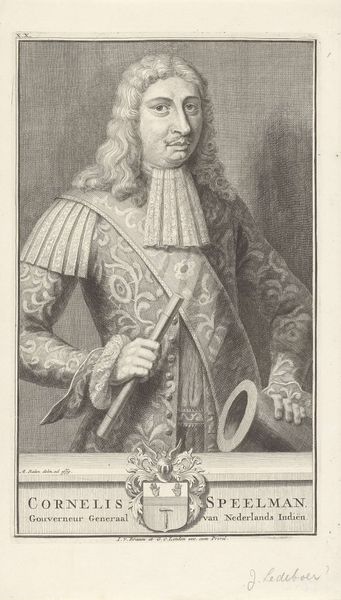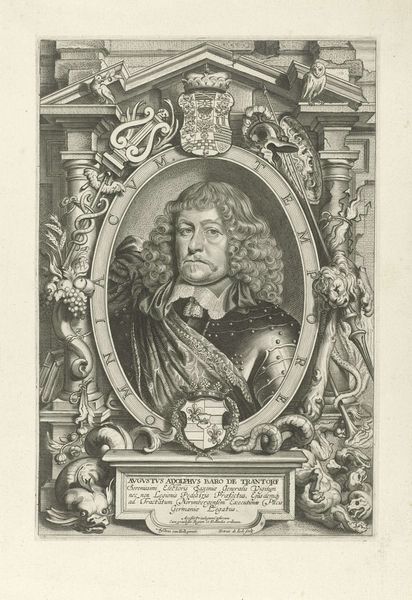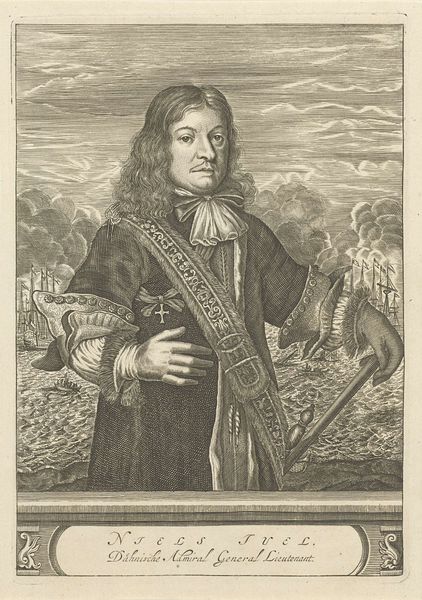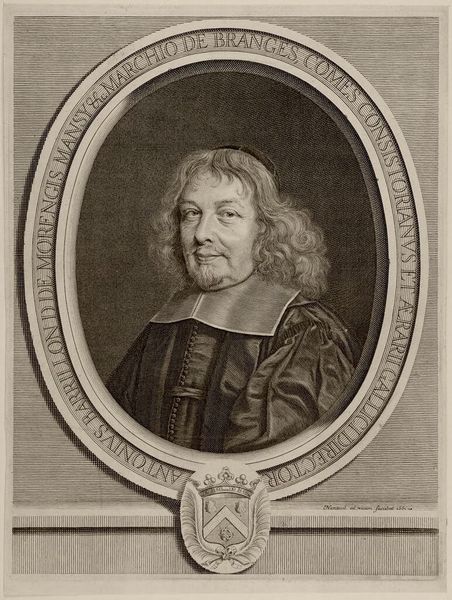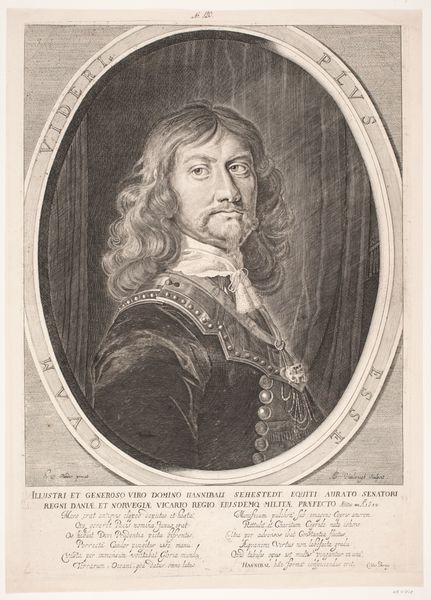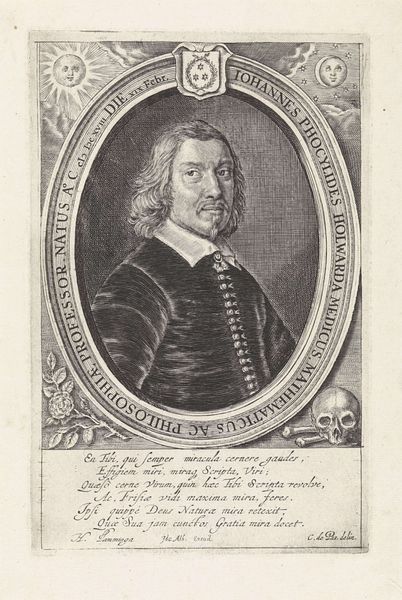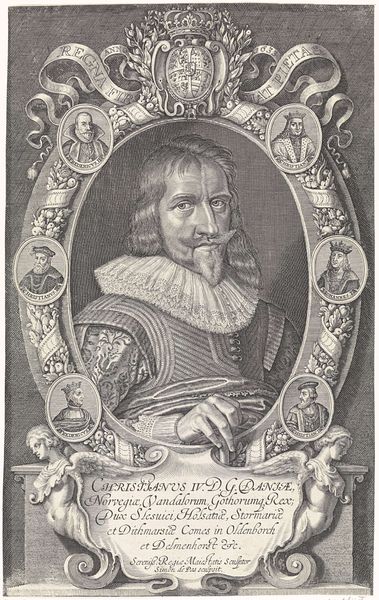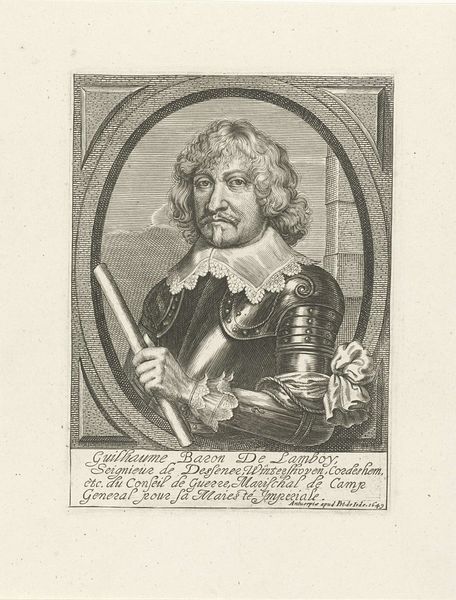
engraving
#
baroque
#
old engraving style
#
history-painting
#
engraving
Dimensions: height 488 mm, width 357 mm
Copyright: Rijks Museum: Open Domain
Curator: This engraving, "Portret van Cornelis Tromp," by Romeyn de Hooghe, created sometime between 1655 and 1691, showcases a Dutch naval hero. It’s incredibly detailed. Editor: The meticulous lines creating textures and forms give the whole image a grand, almost performative mood. What do you see when you look at this portrait? Curator: Well, immediately I’m struck by the contrast between the opulent garments and the raw physicality of the engraving process. The artist is employing this labor-intensive method to depict Tromp. It asks: who benefited from that labour and whose story is absent from the process? Editor: That’s an interesting point. The details are exquisite. Does the technique elevate the sitter, or the social standing of people owning this type of engraved images? Curator: Precisely! Think about the availability of engravings as a medium in the 17th century. Prints made artworks accessible. The social reach contrasts the portrayed Admiral with the craftsman making the plates. What kind of consumption did this create, I wonder? And how can we see his military achievements also in the consumption or trade facilitated via the seas? Editor: So you're saying that this image is as much about Dutch naval power, facilitated by his victories, as it is about material consumption of the upper-class members of the Dutch Golden Age? Curator: Absolutely. It brings to light the system behind the power represented, showing the social network and resources needed for this kind of commissioned artwork to be done, elevating both the admiral, and making accessible art. Editor: I never considered that aspect before! It’s fascinating to think about the labor and systems embedded within an artwork like this. Curator: The materials tell a complex story!
Comments
No comments
Be the first to comment and join the conversation on the ultimate creative platform.
